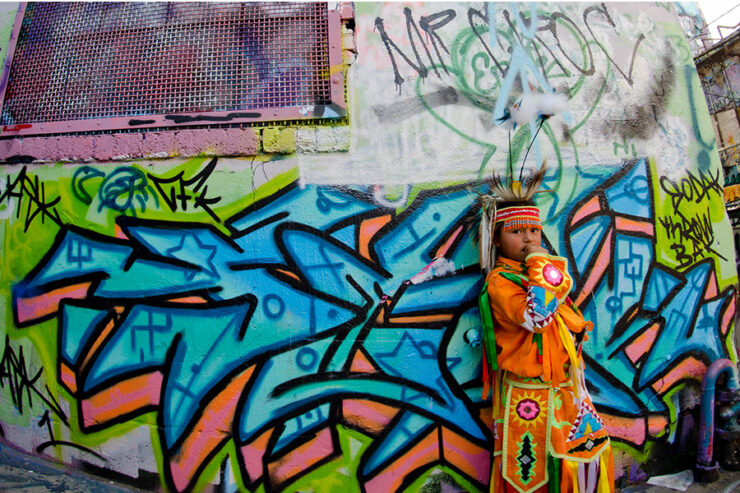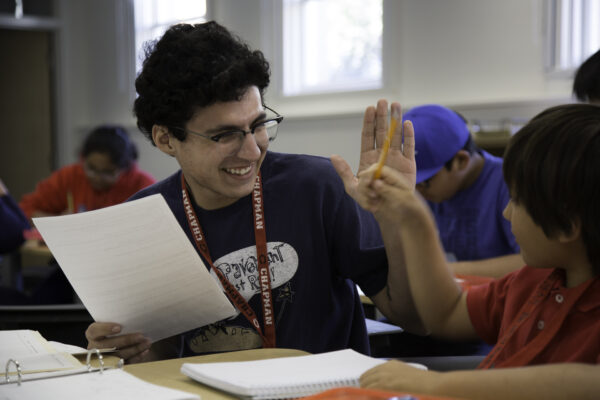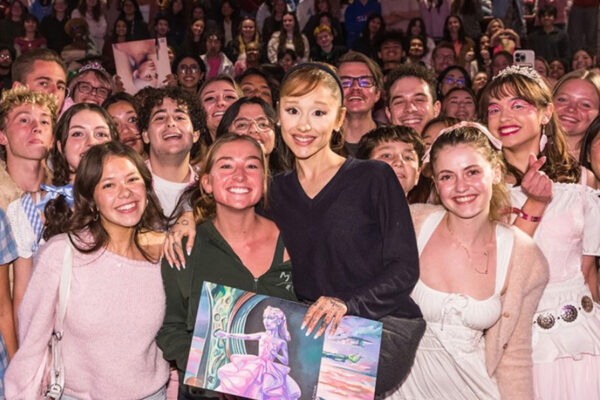Wilkinson College of Arts, Humanities, and Social Sciences Assistant Professor and Director of Ethnic Studies Justin de Leon is receiving support through multiple grants aimed at reshaping Indigenous representation in media. These initiatives on the Cheyenne River Sioux Tribe (CRST) Reservation focus on enhancing mental health and reinforcing cultural identity through storytelling and community filmmaking, enabling them to share their stories and challenge mainstream narratives.
“Historically, the spaces I’ve worked with have been under-resourced politically, economically and socially,” said de Leon. “We focus on how we can create a community-based storytelling environment that tells a community-based or individually-based story in a way that not only allows people to see themselves in the film that we make, but also provides professional training opportunities.”
The foundation of de Leon’s work, supported by a Critical Approaches to Indigenous Relationality (CAIR) grant, centers on “Who Are We,” a short film about mental health within the CRST community. The film explores how a creative sovereignty approach—putting Indigenous voices at the forefront of their own stories—can inspire community healing and act as a tool for both self-representation and cultural affirmation.
“Storytelling within Indigenous traditions conveys knowledge with greater depth, nuance and complexity than typical Western approaches,” said de Leon. “This project seeks to show how Indigenous filmmaking can be a powerful instrument for self-representation and mental health.”
Complementing this, de Leon received a National Institutes of Health (NIH) grant supporting a year-long study on storytelling as a therapeutic tool to nurture mental health and strengthen cultural identity. The grant funds script development and storytelling workshops designed to bridge traditional narratives with mental health practices.
“A meaningful outcome for our films would simply be to share and reflect a story that shows that you belong,” said de Leon. “Many mainstream American representations are not depicted in a positive light, and historically-marginalized communities don’t have the same opportunities to share their own narratives or portray their experiences authentically.”
“In Indigenous communities, the term ‘research’ is often viewed negatively due to its extractive nature and focus on data collection,” he added. “This data is typically presented with a sense of objectivity, which can be problematic. As a justice-oriented scholar addressing settler colonialism and oppression, my goal is to enact change. Everything we do in the community is rooted in long-term values, which can be difficult to quantify.”
Further funding for de Leon’s research comes from a National Endowment for the Arts (NEA) grant specifically awarded for the filmmaking process taking place in South Dakota. This effort draws from previous experiences with the Native Film and Storytelling Institute (2016) and the Creative Sovereignty Lab (CSL), both initiatives that de Leon had led. CSL has trained young Indigenous filmmakers in an apprenticeship-based environment, having created works such as “Braided Together,” a short film that received multiple Audience Choice Awards in 2022.
“For this project, we collaborate with local Indigenous communities to identify stories and select an apprentice with some filmmaking experience who will work alongside professional crew members to film the developed script,” said de Leon. “We collectively learn about and study Indigenous approaches to oral history or Indigenous relationality.”
The impact of these grants goes beyond film production, generating resources that support community dialogue and mental health initiatives. Planned outcomes include community-focused learning and graphic materials to engage CRST members in storytelling practices and scholarly publications.
“My work focuses on highlighting new possibilities,” said de Leon. “I want to show that we can create great films that tell unique stories about an otherwise overlooked future. If the outcome is that people feel seen and their communities and families are validated, then I think I’ve done my job.”
For more information on de Leon’s work in Indigenous storytelling and filmmaking, visit www.JustindeLeon.org.




